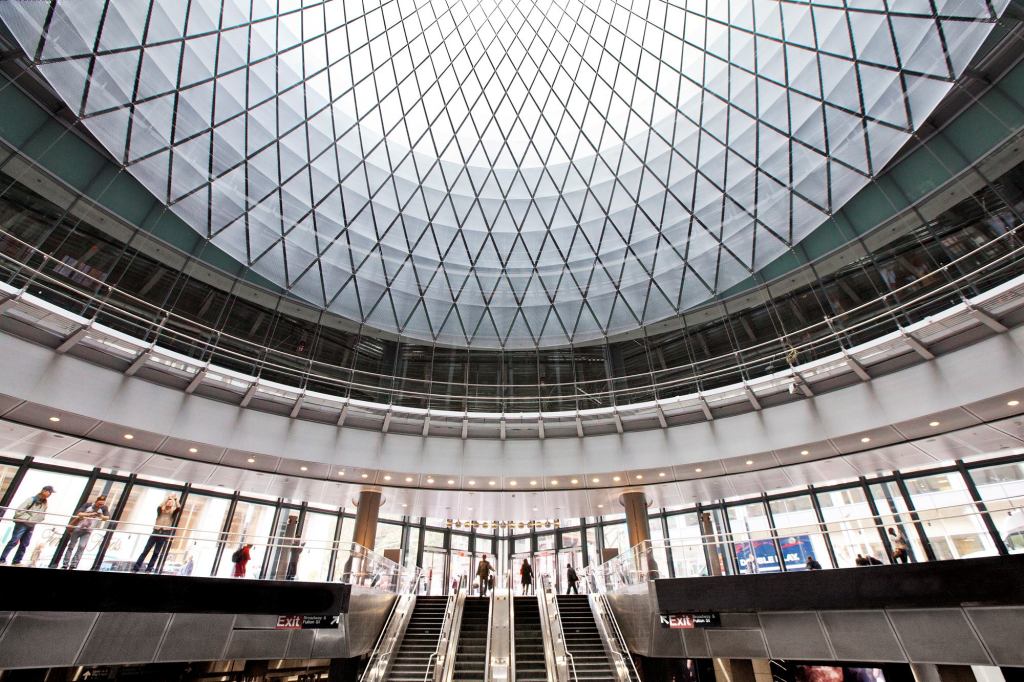On Nov. 10, the Metropolitan Transportation Authority (MTA) opened the doors of Fulton Center to commuters at 5 a.m. to welcome the newly renovated station, commissioned by Arup Limited, which was shut down due to damage from the Sept. 11 attacks. A long awaited occasion, the subway station was originally supposed to open in 2007, but faced setbacks due to a lack of funding, Hurricane Sandy, and systems testing. As the first major restoration for the MTA, the original cost was set at $750 million, but ultimately pushed to $1.4 billion. Although Fulton Center did not receive severe damages from the hurricane, South Ferry station was destroyed in 2012, and at the time was undergoing a $527 million makeover. Arup Limited, the assigned prime design consultant for the MTA since 2003, is finishing this project, which started in 2009 and is expected to open up in 2017.
Estimated to serve over 300,000 passengers a day, commuters will enjoy easier access to nine different subway lines and improved access to subway platforms. With the clear intention of making commuting as easy as possible, the engineers also installed 10 escalators, 15 elevators and brightly lit hallways to lead passengers to their trains. Next year, the MTA expects to add two more lines to run the through the station as well.
Optimizing the natural daylight in the heart of the station is the “Sky Reflector-Net,” a 53-foot glass atrium curved by 112 tensioned cables clad by perforated metal panels. The designs and installation were carried out by James Carpenter Design Associates, Grimshaw Architects, Arup, and Enclos. By addressing the proportions of the tunnels and building the net to concentrate on surface reflection and projection, the net appears to reach beyond the physical limits of the building. The net is installed into the skylight, with natural light shining through the layer of perforated steel panels, and reflects off the ceiling and wall. Pedestrian movements are also reflected within the tunnel of the net, creating a dynamic experience for commuters, and standing as an ethereal icon for an area covered in wreckage from the attacks 13 years ago.
